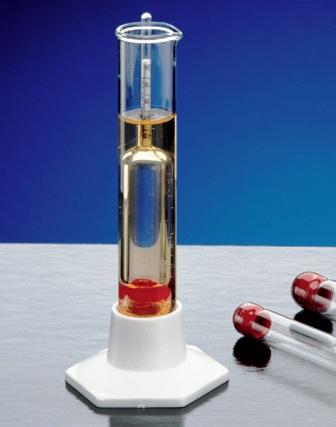You were given research results in the laboratory. What can a person who has little understanding in medicine feel when looking at these obscure numbers? First of all, confusion. Of course, to determine the increase or decrease of a particular indicator does not cause great difficulty, because normal values are indicated in the same form. In order to interpret the obtained figures, certain knowledge is required. Take a well-known urinalysis. The first thing that attracts attention is the specific gravity of urine. What does this indicator mean?

The specific gravity of urine (also called the relative density of urine) shows the ability of the kidneys to concentrate substances intended for removal from the body in the urine. These include, in particular, urea, uric salts, uric acid and creatinine. The specific gravity of urine is normally in the range from 1012 to 1027, it is determined using a urometer. The measurement is carried out in the laboratory. Recently, the determination of urine density is carried out on special equipment using dry chemistry methods.
If fluid is excreted from the body more than usual, then the concentration of dissolved substances in the urine decreases. Therefore, the specific gravity of urine is reduced. This condition is called hypostenuria. It can be observed in healthy people who consume large amounts of fluid after taking diuretic foods (watermelons, melons). Lovers of various diets may experience a decrease in the indicator (due to a lack of protein food in the diet, especially during fasting).

With various diseases of the kidneys, their ability to concentrate various substances in the urine is impaired, so the decrease in specific gravity is caused not by excessive fluid intake, but by impaired renal function (pyelonephritis or glomerulonephritis, nephrosclerosis). Hypostenuria occurs in patients during the period of resorption of edema or effusion, when the fluid accumulated in the tissues quickly leaves the body. A decrease in urine density occurs while taking diuretics. Monotonous specific gravity during the day should alert the doctor regarding pyelonephritis (especially in combination with nighttime urine output).
An increase in relative density above 1030 is called hyperstenuria. A similar condition occurs in people with insufficient fluid intake. The specific gravity of urine, the norm of which is directly proportional to the drinking regime of a person, can increase in the hot season, when a person sweats profusely, therefore, loses a lot of moisture. High numbers of this laboratory indicator are characteristic for workers in hot shops: cooks, blacksmiths, metallurgists.
Hyperstenuria also occurs when blood thickens, which occurs due to profuse vomiting or diarrhea. In patients with heart disease, fluid accumulates in the body, resulting in decreased urine output and increased urine specific gravity. In patients with diabetes mellitus, high specific gravity numbers are often detected in laboratories. In this case, this indicates a large amount of
glucose in the urine.The indicator also indirectly indicates how much the patient adheres to the recommended drinking regimen. This is important for patients with kidney disease and urolithiasis.
A single change in the indicator is not critical for the diagnosis, since the daily fluctuations in the specific gravity can be in the range from 1004 to 1028, and this is normal.